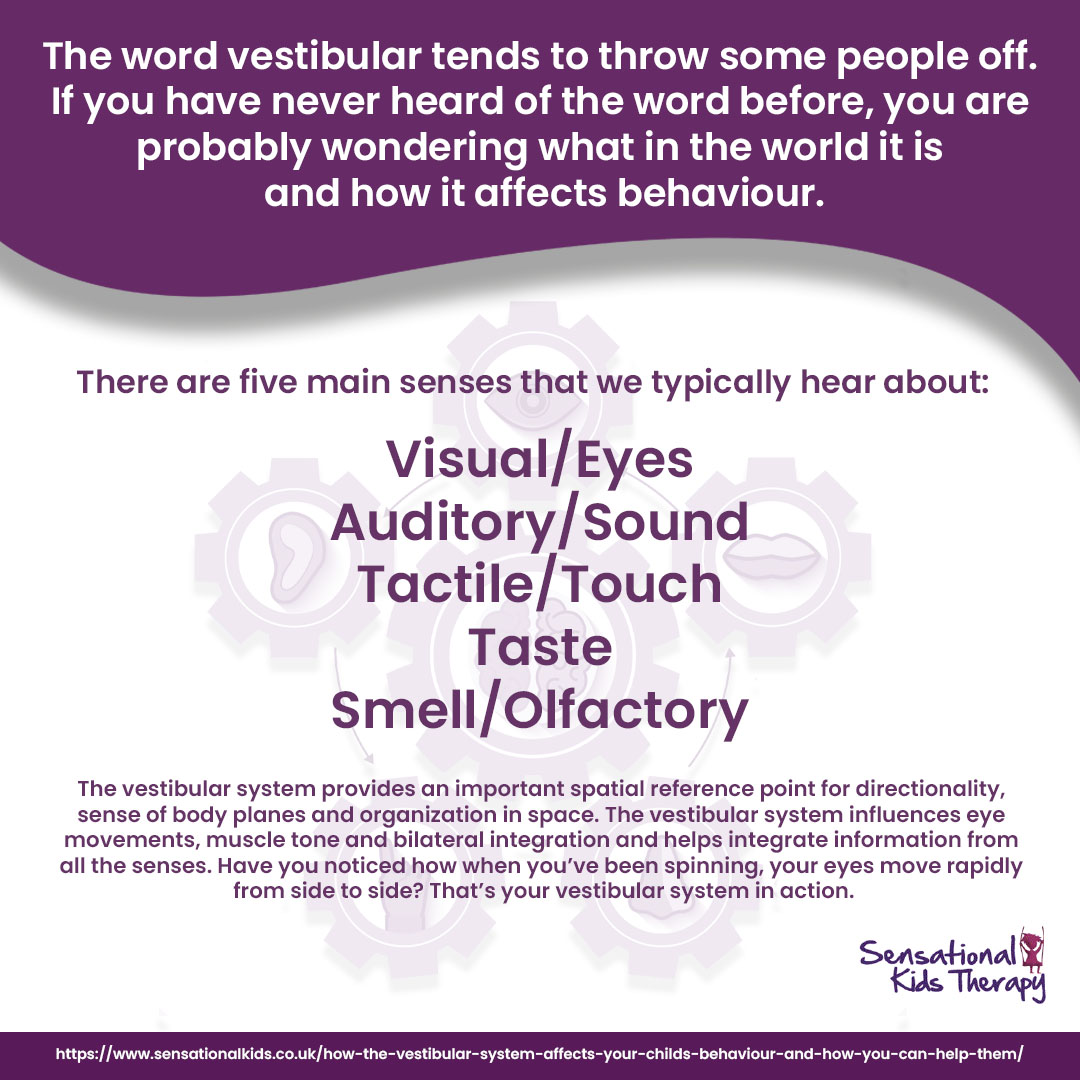The word vestibular tends to throw some people off. If you have never heard of the word before, you are probably wondering what in the world it is and how it affects behaviour.
There are five main senses that we typically hear about:
- Visual/Eyes
- Auditory/Sound
- Tactile/Touch
- Taste
- Smell/Olfactory
People often joke about someone having a sixth sense, but honestly, we ALL have a sixth sense sense (in fact, we have eight, but more on that another day). It is called the vestibular system and it starts in the middle and inner ear. The vestibular system equals a sense of balance and movement – it monitors our head position and the effects of gravity, which means it allows the body to resist the force of gravity for static and dynamic balance, equilibrium reactions, and anti-gravity control.
The vestibular system provides an important spatial reference point for directionality, sense of body planes, and organization in space. The vestibular system influences eye movements, muscle tone, and bilateral integration and helps integrate information from all the senses. Have you noticed how when you’ve been spinning, your eyes move rapidly from side to side? That’s your vestibular system in action.
I believe that the vestibular system is fundamental to all aspects of daily life – walking up stairs, riding a bike, playing in the playground, taking a ride in the car, bending down to pick up toys, as well as simply sitting upright in a chair. As with the other senses, a child may have difficulties and be over-responsive to movement, for example, the kid who gets car sickness, or under responsive – the child who is constantly running and climbing and needing to move.
So how do you develop your child’s vestibular system? There are some easy ways to get started, including:
- Jumping – on sofa cushions, trampoline, jumping jacks, on the spot, frog jumps
- Garden swings and slides
- Log rolling – on carpets, on the grass, down a hill
- Obstacle courses – over, under, through – use furniture and household items like sofas, chairs, beds, and tables.
- Combine movements with proprioception – heavy work activities
- Trampoline
Fun, right? Give them a go and know that while your child is having a whale of a time, they’re also developing a really important sense.

